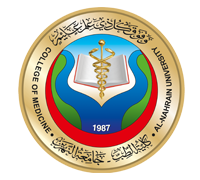|
Vol. 9 Issue 3 July - September / 2011
Published on website | Date : 2016-04-11 09:52:29
Local Staphylococcus aureus Phage GroupsImad Sh Mahmoud, Abdul Munim N Mohammed, Sabiha S SharifAbstractBackground:Staphylococcus aureus isolates distributed into 3 groups according to their sources, 10 isolates from each source. Each of the 30 isolates produced phage lysate. Based on our results, it has been found that these phages obtained from all isolates can be classified into 3 groups (A, B and C).
Objective:To produce local phage groups from locally isolated Staphylococcus aureus strains to be used for epidemiological purposes. Methods: A total of 60 specimens were obtained from three different source locations, surgical theaters (instrument, walls, floor and masks), nurses and inpatients, were enrolled in a study based at Al-Sulimanyiah Teaching Hospital from December 2008 to November 2009. Each specimen was subjected to well known established microbiological. Methods for isolation and identification of Staphylcoccus aureus. All isolates were tested for the presence of phage employing heat method and detected by spotting method, also based on resistance or sensitivity of each isolates to give phage lysates by application of the cross-lysis technique. Result:Staphylococcus aureus isolates distributed into 3 groups according to their sources, 10 isolates from each source. Phages were induced from thirty Staphylococcus aureus isolate. Based on results obtained of the isolates, it has been found that these phages obtained from all isolates can be classified into 3 groups. Group (A) revealed that 1 and 6 phage lysates originally from isolates 1 and 6 were able to lyse all isolates in group 1 except 1 and 6 isolates and those in other groups which were unlysed. A strain was phage typeable (at least one phage produced 20 or more plaques of lysis). Isolates 15 and 16 produced phage lysates 15 and 16 in group (B) which were able to lyse all isolates in group 2 except 15 and 16 isolates and the remaining isolates in other groups which were unlysed. phage lysates 23 and 26 in group (C) which were induced from isolates 23 and 26 were able to lyse all isolates in group 3 except isolates 23 and 26 and the remaining isolates in other groups which were unlysed also. Conclusions:It is detected that 3 local phage groups from Staphylococcus aureus are presented to be used for epidemiological purposes in case of Stapylococcus aureus epidemic. Key words:Staphylococcus aureus, phages, epidemiology. Full-text |
Some tools below are only available to our subscribers or users with an online account |
 |
Please wait until the current process completes ... |



